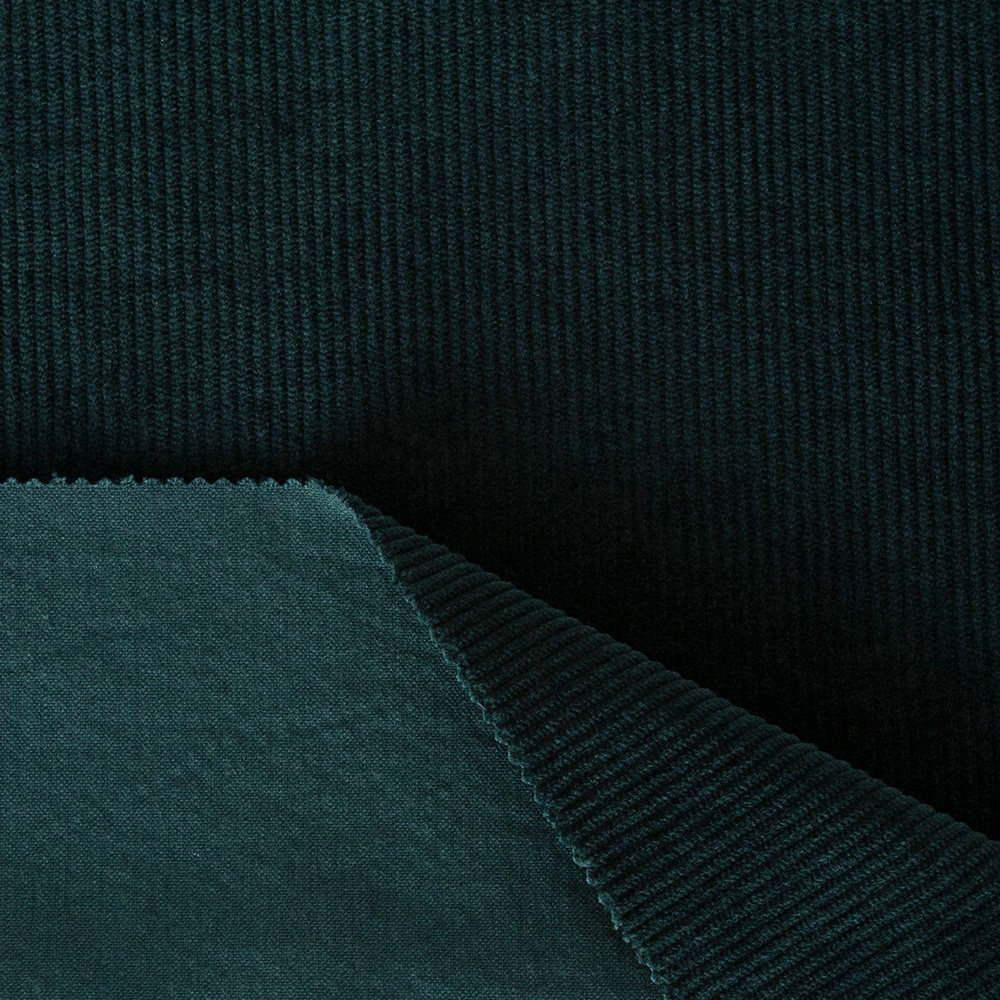Textile Industry Zone, East Hutang Town, Wujin District,213100 Changzhou,China
The dimensional stability of Rayon-Cotton Piece-Dyed Corduroy Fabric under hot and humid conditions is an important performance indicator. Especially for application scenarios such as clothing and home decoration, dimensional stability directly affects the durability and appearance of the fabric. The following is a detailed analysis of its dimensional stability:
1. Main factors affecting dimensional stability
(1) Fiber characteristics
Rayon:
Rayon is a regenerated cellulose fiber with good hygroscopicity, but it is prone to large shrinkage or deformation under hot and humid conditions.
The wet strength is low, and it is easy to cause changes in the fiber structure due to water absorption and expansion, resulting in dimensional instability.
Cotton:
Cotton fiber also has high hygroscopicity, but compared with rayon, its wet strength is higher and the shrinkage rate under hot and humid conditions is relatively small.
However, cotton fiber itself still has a certain tendency to shrink, especially when it has not been pre-shrunk.
(2) Blending ratio
The ratio of Rayon and Cotton will significantly affect the dimensional stability of the fabric. For example:
If the proportion of Rayon is high, the shrinkage rate of the fabric under wet and hot conditions will be greater because artificial cotton is more sensitive to wet and hot conditions.
If the proportion of Cotton is high, the dimensional stability of the fabric will be relatively good, but the shrinkage of the cotton fiber itself still needs to be considered.
(3) Fabric structure
Corduroy is a weft pile fabric. Its special pile structure may cause uneven shrinkage or deformation under wet and hot conditions.
The density (WPI, that is, the number of piles per inch) and thickness of the pile will also affect the dimensional stability. Dense piles may limit the free shrinkage of the fabric, while sparse piles are more susceptible to wet and hot conditions.
(4) Dyeing and finishing process
The piece-dyeing process has an important influence on the dimensional stability of the fabric. If sufficient pretreatment (such as pre-shrinking and shaping) is not carried out during the dyeing process, the fabric may shrink significantly in subsequent use.
Finishing processes (such as heat setting and resin finishing) can significantly improve the dimensional stability of the fabric. For example, high-temperature shaping can reduce the deformation of the fiber under wet and hot conditions.
2. Dimensional stability test method
In order to evaluate the dimensional stability of Rayon-Cotton corduroy under hot and humid conditions, the following test methods are usually used:
Shrinkage test:
Immerse the fabric sample in water or expose it to a hot and humid environment, and measure the percentage change in its length and width. Common standards include:
AATCC 135 (Dimensional changes of textiles after home washing)
ISO 6330 (Dimensional stability of textiles after washing and drying)
ASTM D4974 (Dimensional changes of textiles under hot and humid environments)
Steam shrinkage test:
Simulate a hot and humid environment, expose the fabric to steam, and observe its shrinkage.
Ironing test:
Test the dimensional change of the fabric under high-temperature ironing conditions to evaluate its heat resistance.
3. Methods to improve dimensional stability
In order to reduce the dimensional change of Rayon-Cotton corduroy under hot and humid conditions, the following aspects can be used:
(1) Optimize the fiber blending ratio
Adjust the ratio of Rayon and Cotton according to specific application requirements. For example: For applications that require high dimensional stability (such as coats or curtains), the proportion of Rayon can be appropriately reduced and the proportion of Cotton can be increased. While pursuing a soft feel, the dimensional stability of the fabric can be enhanced by adding a small amount of synthetic fibers (such as polyester).
(2) Strengthening the pretreatment process
Pre-shrinkage treatment:
After weaving, the fabric is mechanically pre-shrinked to release some stress in the fiber during the production stage, thereby reducing the shrinkage rate in subsequent use.
Heat setting:
The fiber structure is fixed through a high-temperature heat setting process to reduce the risk of deformation under wet and hot conditions.
(3) Improving dyeing and finishing processes
Resin finishing:
Treating the fabric with a resin finishing agent (such as DMDHEU) can enhance the rigidity and wrinkle resistance of the fiber while reducing wet and hot shrinkage.
Coating treatment:
Applying a functional coating (such as PU coating) on the surface of the fabric can further improve dimensional stability, but may affect breathability.
(4) Controlling fabric structure
Optimize the density and thickness of the corduroy strips so that it can maintain good shape stability under wet and hot conditions.
Use low-elastic yarn or high-twist yarn in the weaving process to reduce the expansion and contraction of fibers under hot and humid conditions.
Ultimately, through scientific design and strict production process control, the dimensional change of this fabric under hot and humid conditions can be kept within an acceptable range, thus meeting the needs of different application scenarios.












